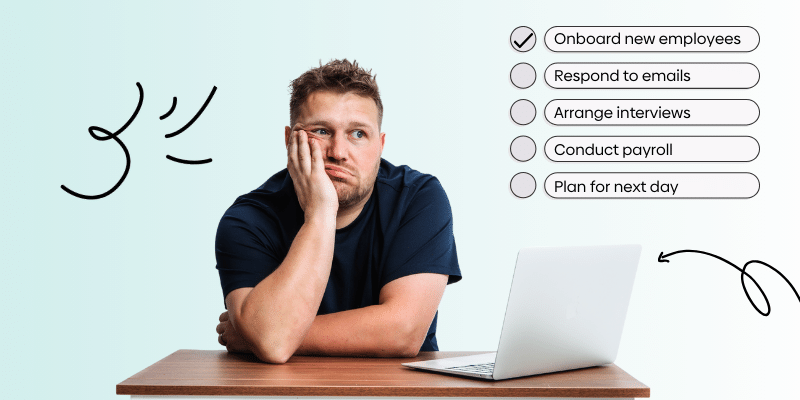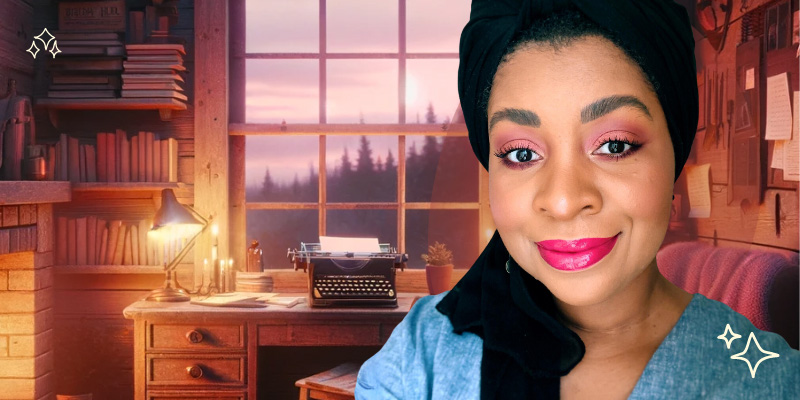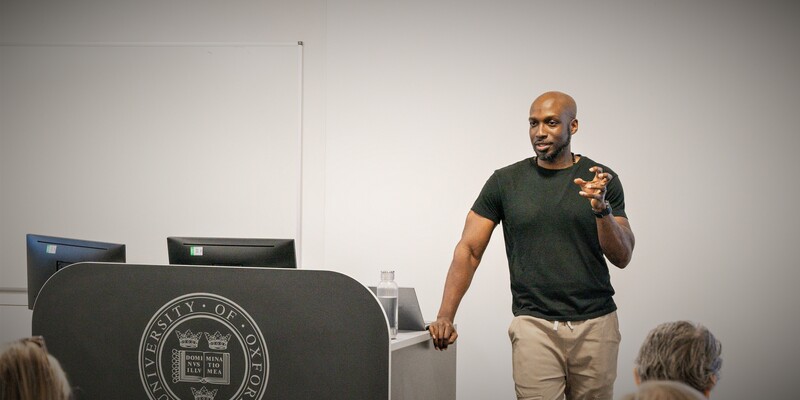The science and art of finding music to focus to


By Talia Girton
•
Mar 24, 2023
You can probably think of several ways that music has played an important role in your life.
Perhaps there’s a particular song that you and a good friend belted out together on a memorable road trip. Or you might remember the magical sensation of moving in rhythm with your partner to your song during the first dance at your wedding.
There may even be a particular song that you chose to sing as a final farewell to a loved one at their funeral. Music can induce and enhance a myriad of different emotions and memories, and particular songs can mark defining moments in our lives.
We all know intuitively that music is powerful. But why does it affect us so strongly, and how can we harness its magic as a tool to help us focus at work?
Let’s delve into the historic connection between music and wellbeing, explore the effects of music on the brain, lay out how music can help you concentrate, and guide you through the creation of a curated playlist of music to focus to.
“The idea of music having a use goes back centuries.”
A short history of music and wellbeing
Music has been used as a tool for healing, community building, and sacred rituals throughout human history. In ancient Greece, music was used in medical settings to promote wellbeing and balance in the body and soul. In the Middle Ages, musicians were employed in hospitals and monasteries to play for patients suffering from various illnesses.
In the 20th century, music therapy emerged as a formal profession, with trained professionals using music to help clients improve their physical, emotional, behavioral and cognitive health.
Today, music therapy is recognized as a valuable tool for promoting wellbeing and treating a range of conditions from depression and anxiety to chronic pain and neurological disorders. Music has also been shown to have a positive impact on mood, stress levels, and overall quality of life for people of all ages and backgrounds.
“For many of my neurological patients, music... can provide access, even when no medication can, to movement, to speech, to life. For them, music is not a luxury, but a necessity.”
Music and the brain
Music is a complex and dynamic stimulus that engages multiple areas of the brain. When music enters our ears, it is first processed in the auditory cortex where it is broken down into its component parts including pitch, rhythm and timbre.
Auditory information is then sent to other parts of the brain to be compared against previous sound experiences and emotional responses, stimulating a variety of regions in both hemispheres of the brain such as the prefrontal cortex and the limbic system.
“Music should be an essential part of every analysis.”
Neurotransmitters, our ‘chemical messengers,’ also play an important role in the interaction of music and the brain. Studies have shown that engaging with music has an important impact on our levels of dopamine, serotonin, oxytocin and cortisol.
Dopamine, a “feel-good” neurotransmitter, can enhance focus and productivity. Serotonin is linked to mood regulation, so listening while we work can lead to improved mood and enhanced creativity. Oxytocin, our bonding hormone, helps to foster positive social interactions by promoting trust and cooperation, and studies have documented the link between group music experiences (think concerts and festivals) and oxytocin release.
Music is also associated with dramatically reduced levels of cortisol, our stress hormone. In fact, research shows that music is as effective as anti-anxiety medication at lowering pre-operative anxiety.
How music can improve your work
So, how can you make music work for you? Creating a well-designed and intentional playlist can improve your creativity, motivation, mood and focus. Distractions in the office are abundant and include noisy conversations, ringing phones and interruptions from coworkers.
Some people may also struggle with time management or be preoccupied by worries outside of work.
How music can help you work:
- By putting on noise-cancelling headphones to enhance your listening experience, you can drown out the noise of your surroundings and limit distractions. This will also signal to others that you are in the zone and not to be disturbed.
- Let your playlist create a time-container for you, almost like a Flock! Make a 50 or 60 minute playlist and let yourself get lost in your work. You’ll know it’s time for a break soon when your cool-down song(s) start playing (more on this below). Rather than being jolted out of your flow state, you’ll be eased out gently.
- As we explored earlier, listening to music can reduce stress levels and improve mood, lessening the impact of any personal preoccupations. See “final thoughts” for additional information about how to curate your playlist for emotional challenges.
How to create a “music to focus to” playlist
1. Brainstorm what songs immediately come to mind when you think about the word “focus”? These will likely be songs with a faster tempo (speed), motivating lyrics, and a strong beat. Add 10-15 songs to a Spotify playlist; the ‘recommended’ songs that come up may be useful to help you think of more! If you get stuck, have a look at Flown’s deep work playlists on Spotify for some inspiration.
2. Reflect on how specific musical elements like lyrics, tempo, moments of silence and instrumentation might contribute to your state of mind. If lyrics are distracting, search for an instrumental version of the song. If a slower tempo makes you sleepy, look for an EDM remix. If it’s a strong beat that gets you pumped up, skip songs that lack drums or a bass line.
3. Assign 1-2 songs to the beginning of your playlist as your warm-up songs, and 1-2 songs to the end of your playlist as cool-down songs. The middle 10-12 songs are your core focus songs. The warm-up songs should ease you into your deep work session; they may be a bit slower than your core focus songs. The cool-down songs should signify that it’s time to start bringing your session to a close (think “Closing Time” by Semisonic!)
4. Use your playlist on a regular basis. What’s amazing is that the more you use it, the more you will reinforce the idea that when this particular set of songs is on, it’s time to do some deep work. You are essentially training your brain to respond to the music and using the music to train your brain. It's great for Flocks.
How Flocks work
Why how you experience music matters
There is no such thing as “relaxing music” or “motivating music” because what might feel calming or energizing to one person might have the opposite effect for someone else. The way that you experience music will depend on your personal taste, previous experiences, and on memories associated with particular songs.
The most effective music is going to be music that you enjoy listening to. When you can start to tap into how different ways of engaging with music work for you personally, you can start to use music more intentionally. So if you don’t like techno, skip it!

You may want to make a few different playlists with the same core focus music, but with different warm-up and cool-down songs. Use the warm-up songs to ‘meet you where you are.’ They may reflect anxiety, frustration, or boredom to validate your current state of mind. Acknowledge it, feel it, and move on. Remember, in order to leave a place, you must first arrive. On the other hand, you might need to work up until the very last second of your deep work session; in that case, keep the energy high to the end of the final song.
As we’ve explored in this post, listening to music while you work can improve focus, creativity and mood, and also decrease stress. You can take advantage of this by creating a playlist of music to focus to, keeping in mind how various elements (e.g. tempo, instrumentation, moments of silence, lyrics) of the songs you love might affect your concentration.
As you go about making your focus playlist, be sure to experiment with a variety of songs from your library, with the order of the songs, and with different versions of the songs (instrumental, acoustic, remixes, etc.) to find what works for you. Happy listening!
“When music is needed, it’s really there and it serves a purpose.”
Further Reading
Online Article: Music for Creators by Health & Bass
Book: Wellness, Wellplayed: The Power of a Playlist by Jennifer Buchanan
Video: Creating Functional Playlists: Music for Wellness by Berklee College of Music
Music Therapy Resources:
American Music Therapy Association
British Association for Music Therapy


















